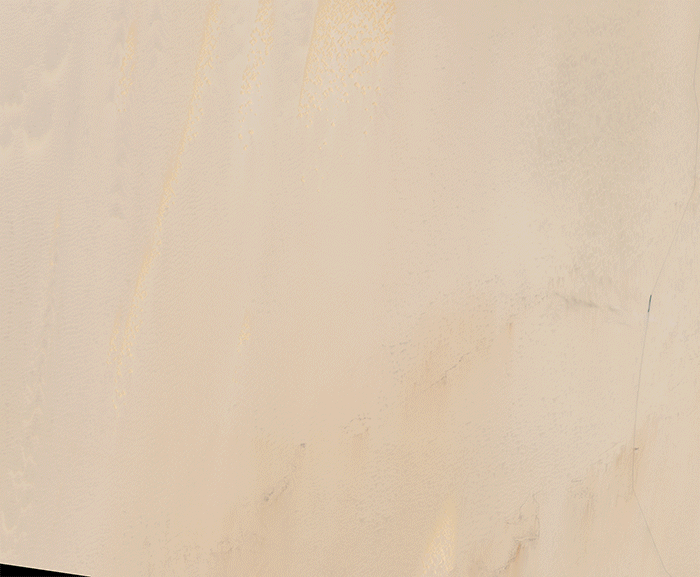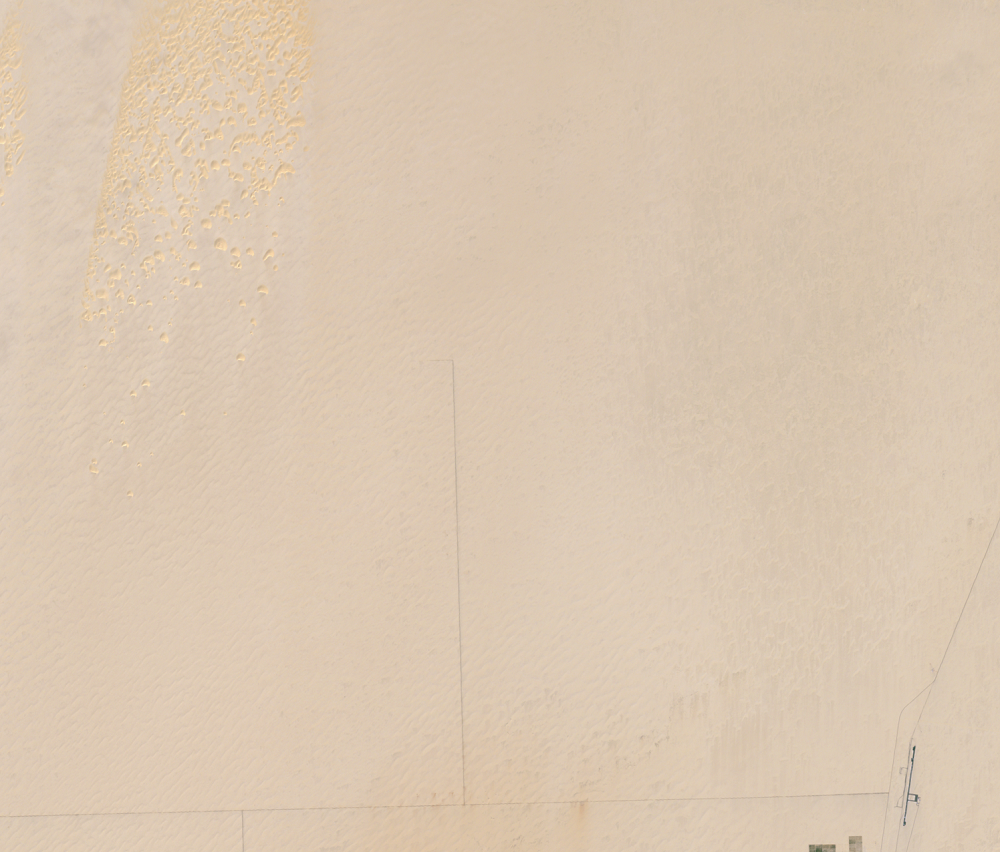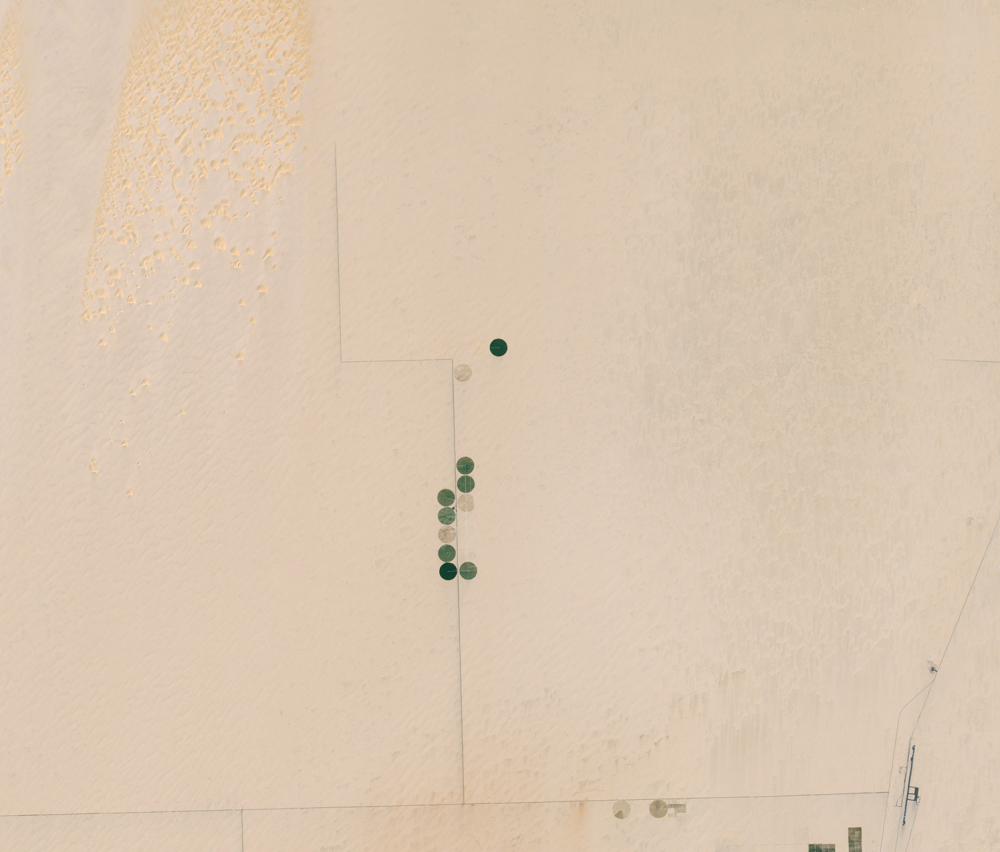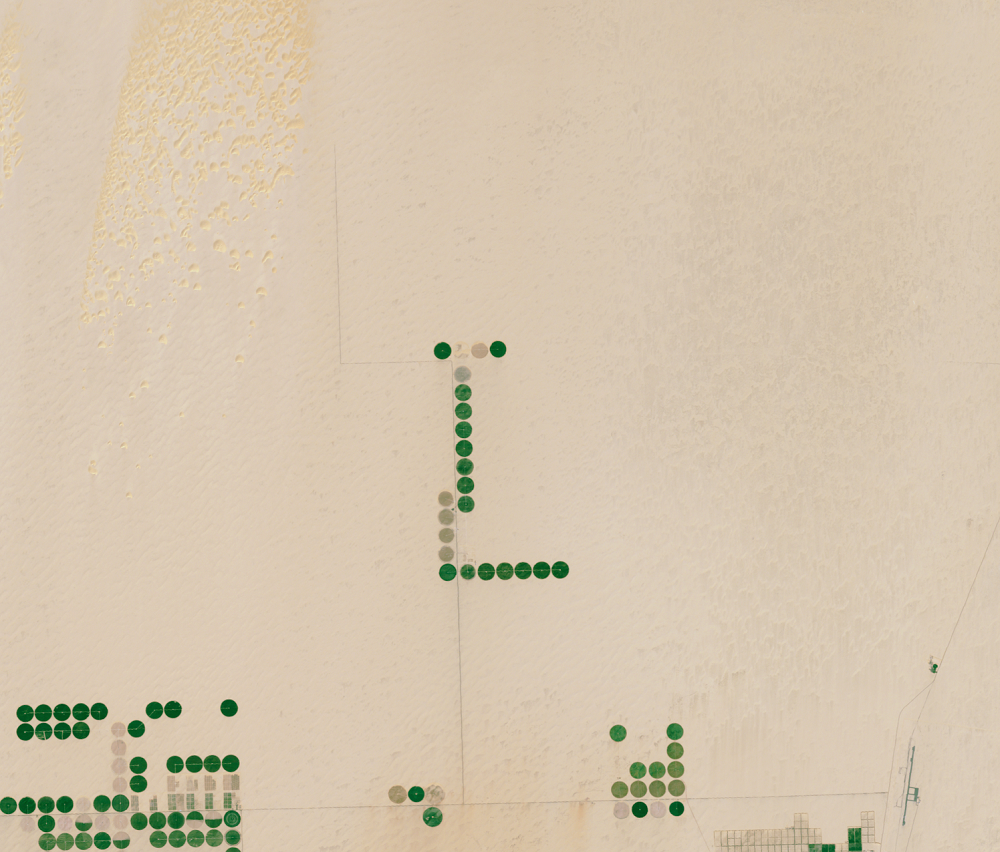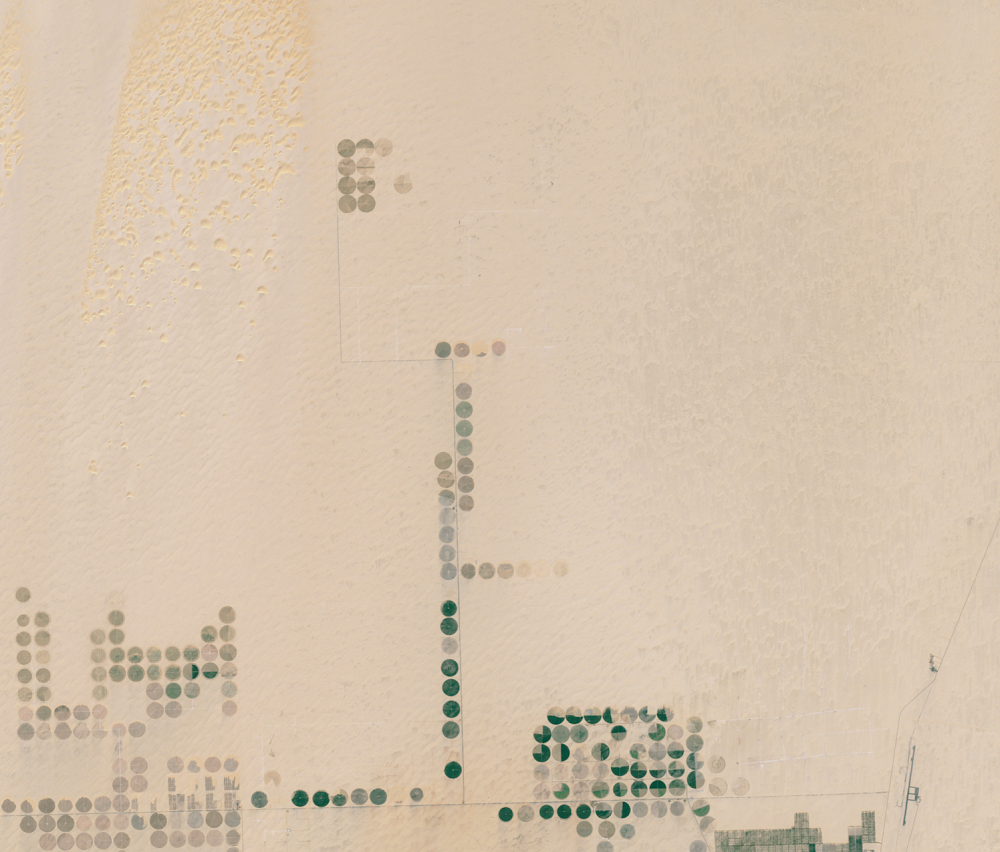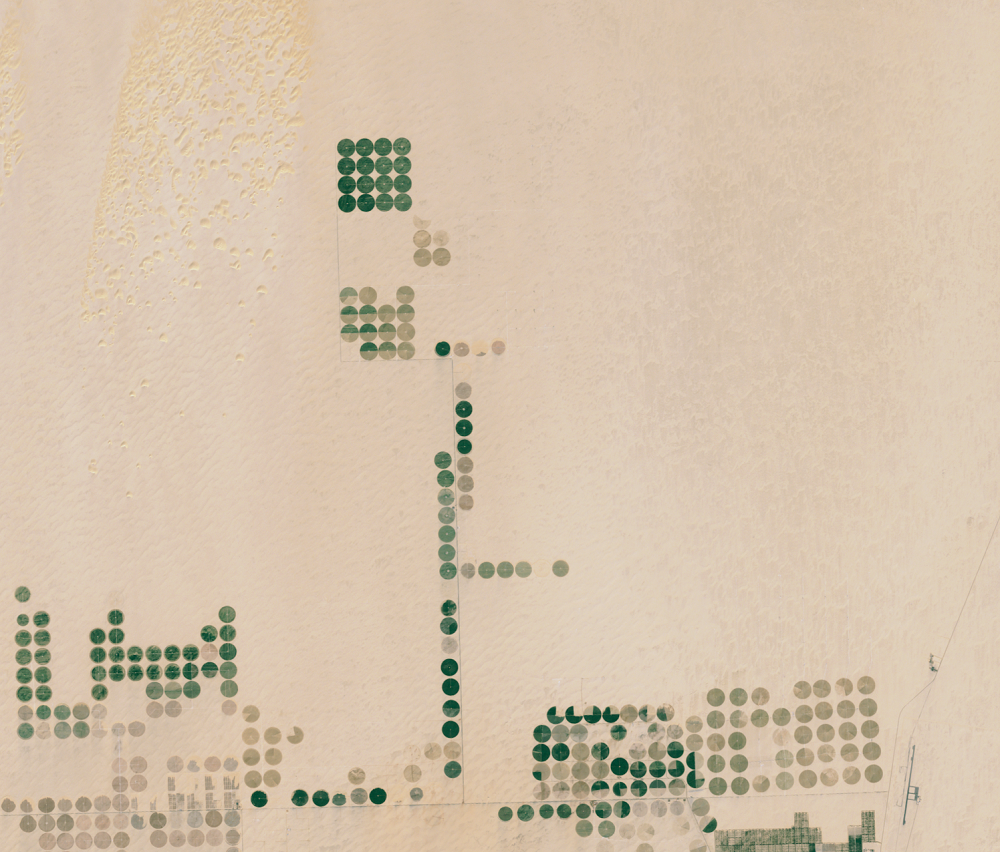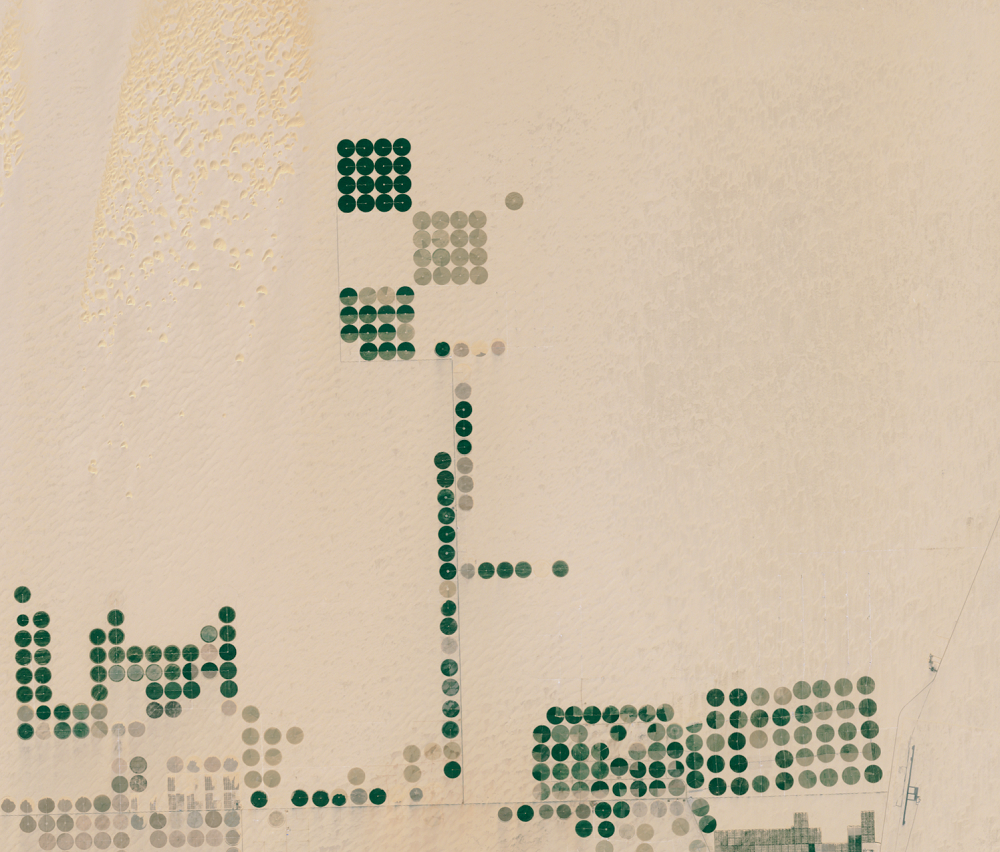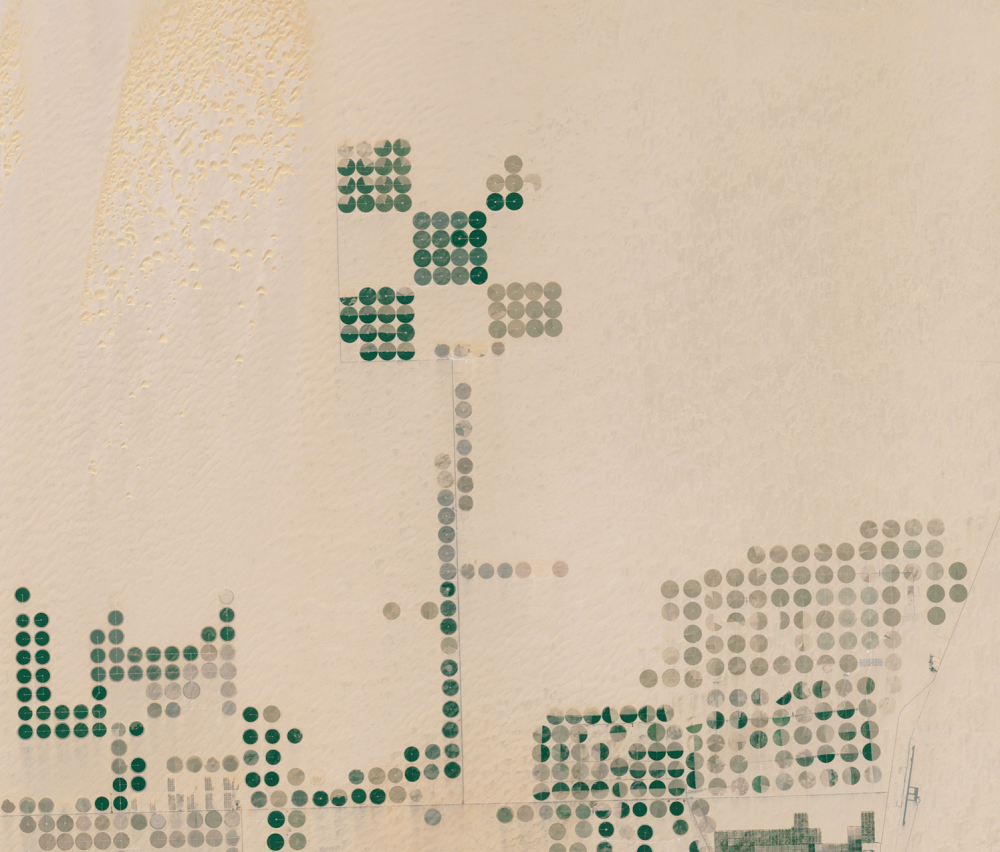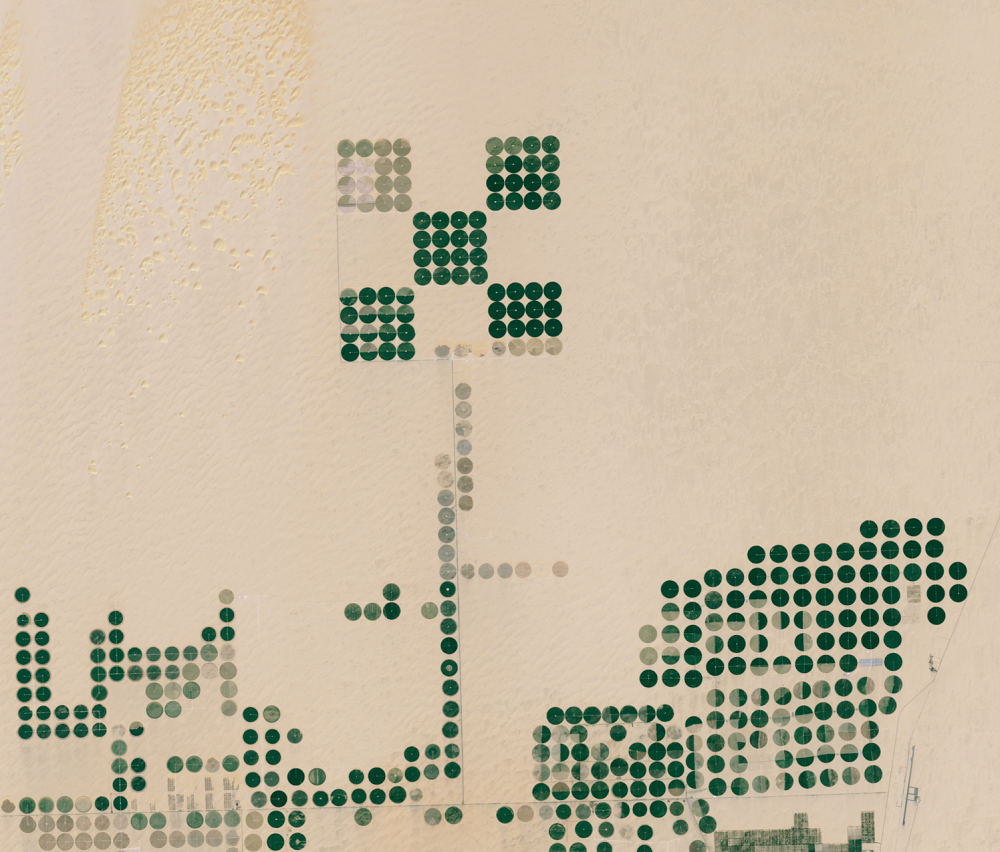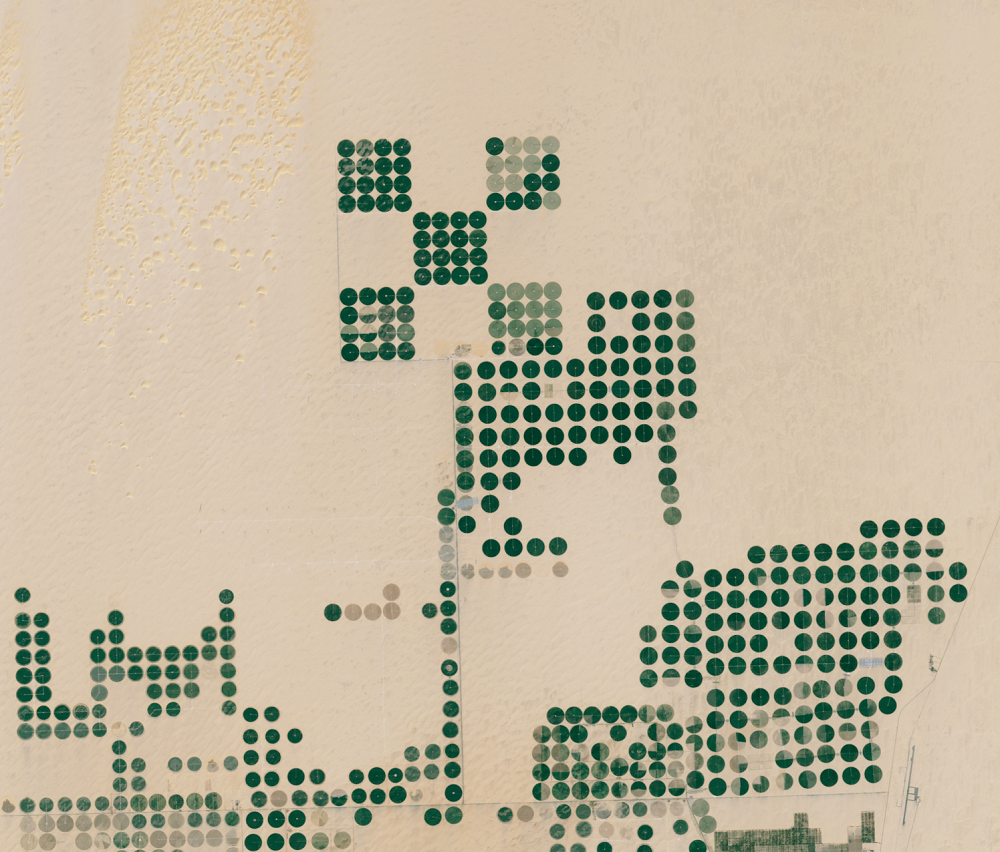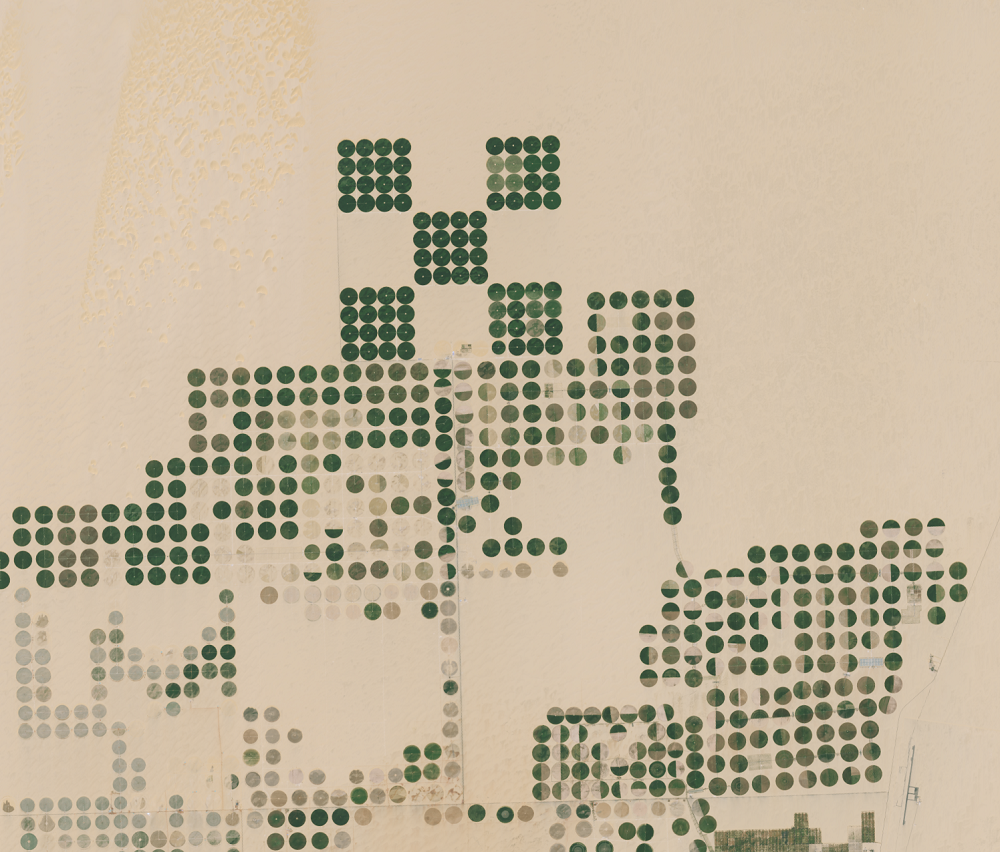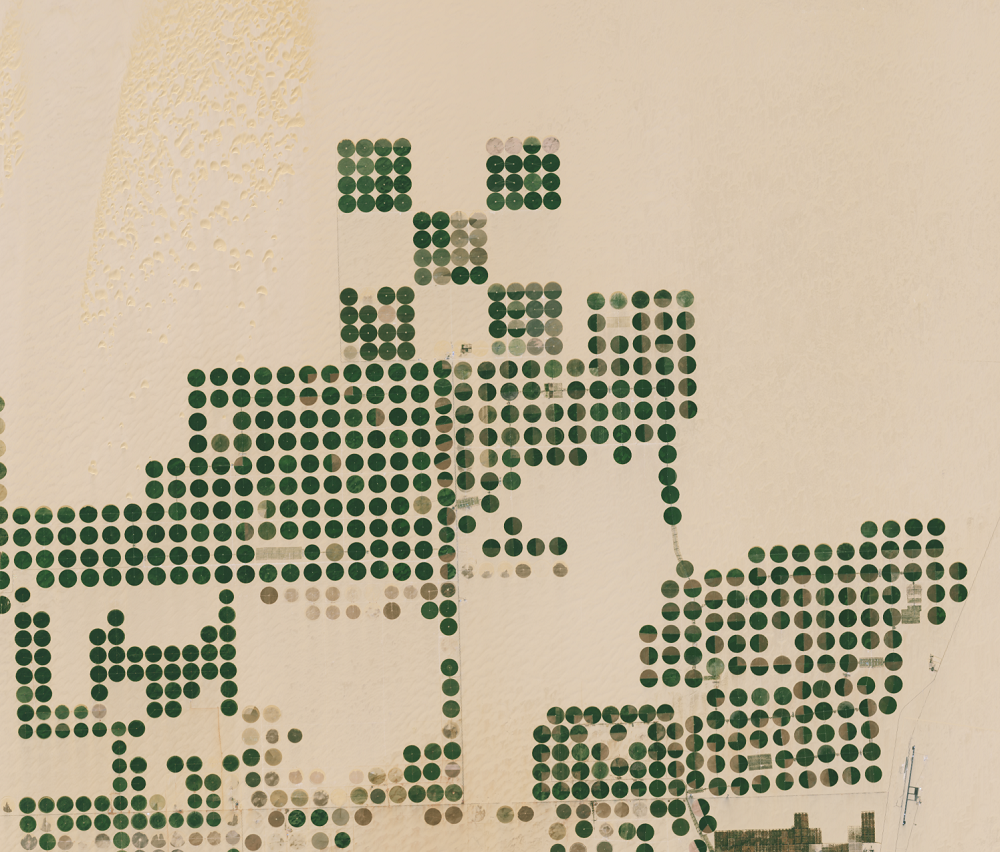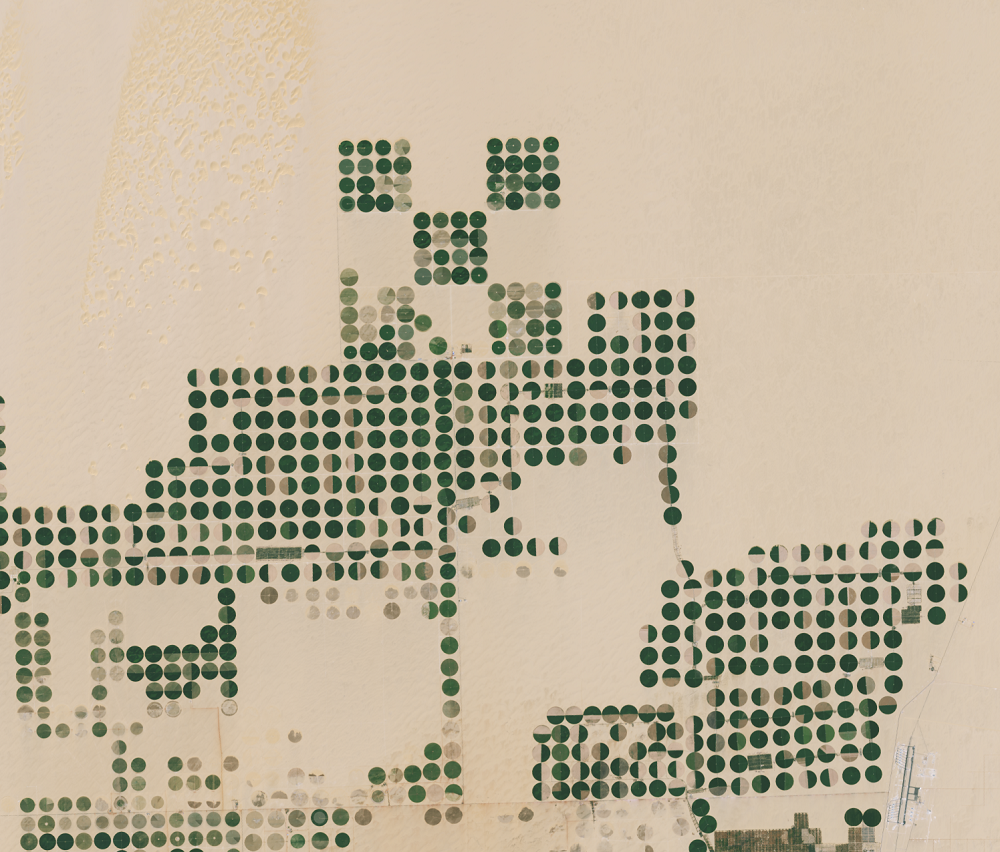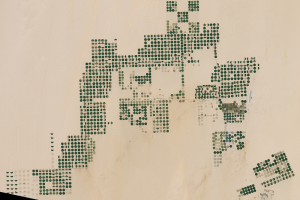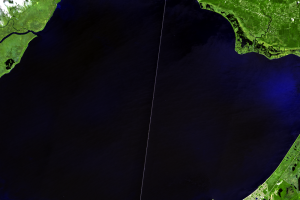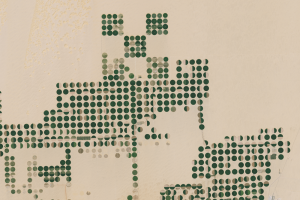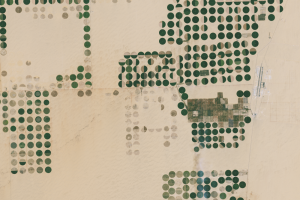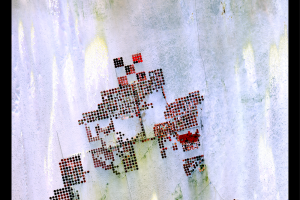
Watering the Sahara
Earth Resources Observation and Science (EROS) Center - Earthshots
One of the best test sites, named Egypt-2, was steadily reliable until around the late 1990s. In a vast expanse of Sahara Desert in southern Egypt, center pivot irrigation fields began appearing where there had only been sand just a few years before, changing the reflectance.
Precipitation is extremely rare here, so how do they get water for all these crops?
The region, called Sharq El Owainat, sits atop the Nubian Sandstone Aquifer System. Groundwater from the aquifer is pumped through wells to the surface and spread to the field via center-pivot irrigation sprinklers. The region now produces about a third of Egypt’s wheat crop, which is exported by way of the Sharq El Owainat airport.
With all of that land use change happening in the region, Egypt-2 could not continue as a test site.
